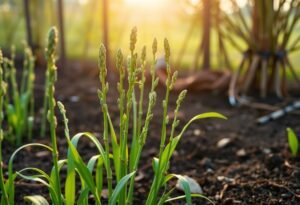Choosing the Perfect Spot for Hydrangeas
When searching for the ideal location for planting hydrangeas, there are several key factors to consider. Hydrangeas thrive best in partial shade, protected from the harsh afternoon sun. The soil in your chosen spot should also be slightly acidic and rich in nutrients. If given adequate light, these plants will reward you with stunning blooms that uplift your entire garden.
Preparing the Soil for Planting
Soil preparation is a vital step in the process of planting hydrangeas. Start by thoroughly clearing the area of weeds and other plants. Enriching the soil with compost or well-rotted manure will enhance its fertility, providing an excellent growing environment for your hydrangeas. The optimal pH for hydrangeas is between 5.5 and 6.5, so regular soil testing will help you adjust the conditions accordingly.
Planting Techniques for Hydrangeas
Once you’ve selected your spot and prepared the soil, you can begin planting hydrangeas. Dig a hole about 16 inches deep and wide. Adding a drainage layer at the bottom, such as gravel, is a smart move. Plant the hydrangeas at the same depth they were in their pots, covering the roots with soil while gently compacting it around the base. Be sure to avoid water pooling around the roots, which can cause rot.
Watering and Fertilizing Hydrangeas
Proper watering is crucial for hydrangea care. Planting hydrangeas means committing to a consistent watering routine, especially during hot summers. These plants love moisture, but they cannot be waterlogged. Using mulch helps retain moisture in the soil. Fertilizing every few weeks with a slow-release fertilizer ensures that your plants receive all the nutrients they need for spectacular blooms.
Pruning Hydrangeas
Hydrangeas should be pruned in early spring before their intense growth begins. Planting hydrangeas is just the start, as proper pruning is essential for their health and future blooms. Trim off spent blooms, leaving behind strong, young branches that will belong to next year’s flowers.
Protecting Against Pests and Diseases
In order to enjoy healthy hydrangeas, it’s important to monitor them for pests and diseases. Planting hydrangeas requires a keen eye for potential issues. Regular checks can swiftly identify problems. The most common pests include aphids and spider mites. Natural pest control methods can effectively tackle these challenges.
Conclusion
Planting hydrangeas is an incredible way to add vibrant colors to your garden. By providing the right conditions and care, you can enjoy their beauty for years to come. Whether you’re a seasoned gardener or a novice enthusiast, hydrangeas promise to bring joy and satisfaction. So don’t wait — start planning your floral paradise today!
Disclaimer
The information provided in this article is for informational purposes only and does not replace professional gardening advice. Always consult with a local expert before undertaking any gardening projects.

















